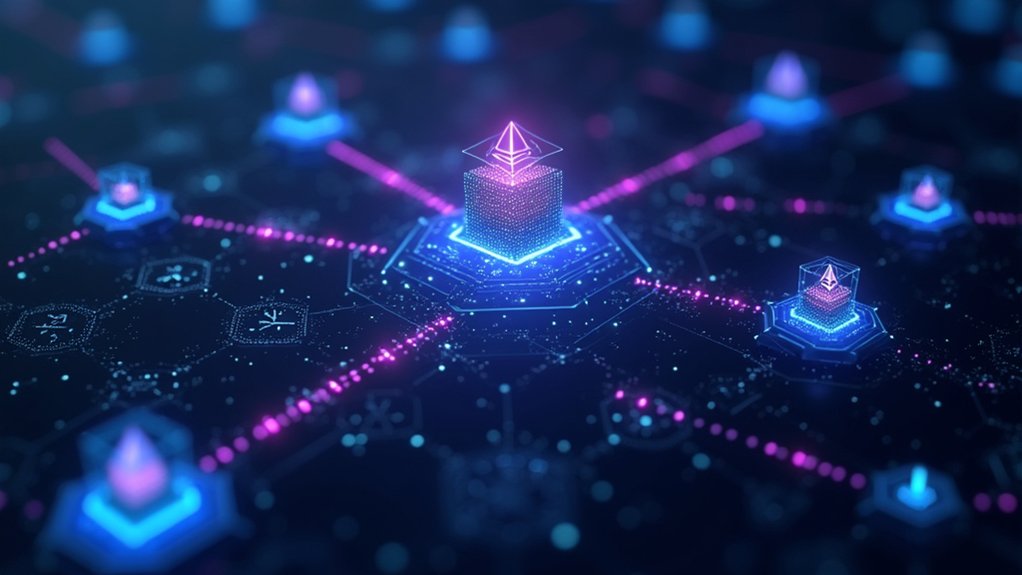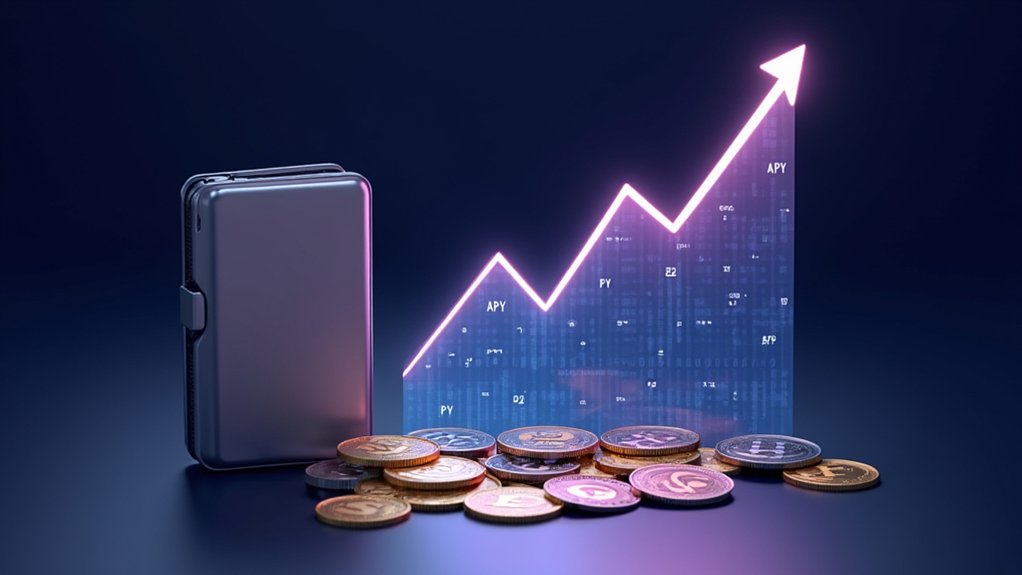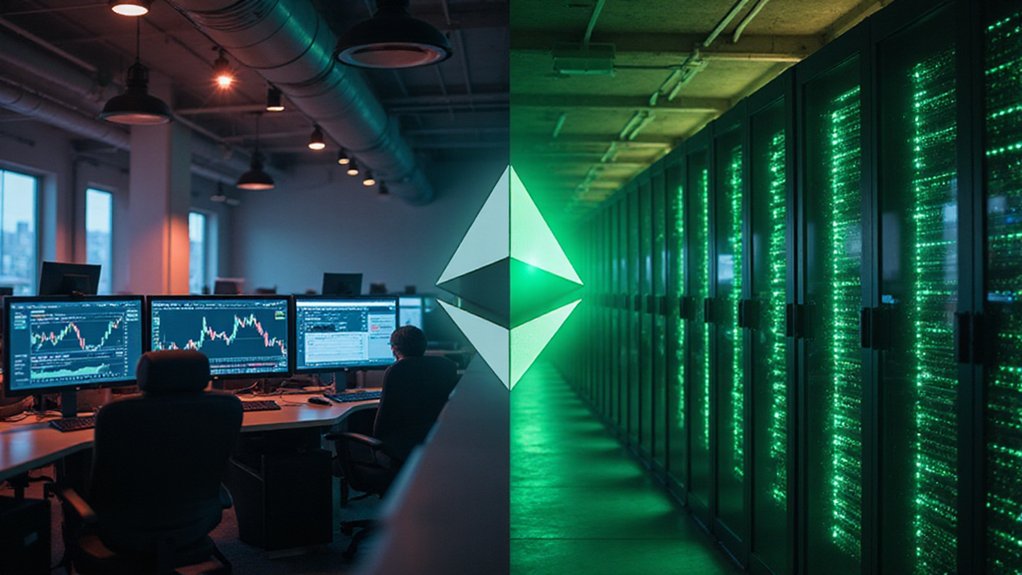DApps (decentralized applications) are software programs running on blockchain networks rather than centralized servers. They offer transparency, censorship resistance, and user data ownership without intermediaries. Ethereum hosts the largest DApp ecosystem, while Solana, Binance Smart Chain, and Polygon provide alternatives with different performance characteristics. These applications span finance, NFTs, gaming, and supply chain sectors. Despite current scalability challenges and complex development requirements, DApps continue evolving with AI integration and improved cross-chain functionality anticipated by 2025.

Ethereum remains the largest ecosystem for DApp development, particularly excelling in decentralized finance (DeFi) applications and non-fungible token (NFT) marketplaces. Other prominent platforms include Solana, known for high-speed transactions ideal for gaming applications; Binance Smart Chain, which has gained substantial adoption in DeFi; Polygon, offering Ethereum compatibility with reduced fees; and Polkadot, specializing in cross-chain interoperability.
"The value proposition of DApps centers on their ability to operate without intermediaries," notes blockchain analysts. This architecture delivers increased security through decentralization, transparent record-keeping, resistance to censorship, and user ownership of data. Many DApps incorporate tokenized incentives, creating novel economic models that reward participation. The peer-to-peer structure enables users to engage in financial activities without traditional intermediaries.
Despite their advantages, DApp developers face significant challenges. Scalability remains a concern on many blockchain networks, with transaction throughput limiting user experience. These applications rely on smart contracts for executing predetermined rules when specific conditions are met.
Development complexity exceeds that of traditional applications, often resulting in interfaces that lag behind centralized alternatives. Regulatory uncertainty creates additional hurdles, and the immutable nature of deployed smart contracts makes bug fixes particularly challenging.
DApps have found traction across numerous sectors, with particularly strong adoption in finance through DeFi protocols and decentralized exchanges. The open source nature of DApps fosters community-driven innovation and continuous improvement.
NFT marketplaces represent another significant use case, alongside gaming, virtual worlds, and supply chain management applications.
Looking toward 2025, industry experts anticipate integration with artificial intelligence, improved scalability through layer-2 solutions, upgraded user experiences, greater cross-chain interoperability, and the continued growth of decentralized autonomous organizations (DAOs) governing these systems.
Frequently Asked Questions
How Do DAPPS Handle User Data Privacy Compared to Traditional Apps?
DApps offer improved privacy through decentralized data storage, giving users ownership over their information instead of centralized servers controlling it.
They employ cryptographic techniques and zero-knowledge proofs to protect sensitive data while maintaining transparency. Smart contracts clearly define data usage terms, requiring explicit consent for sharing.
Unlike traditional apps that often monetize user information, DApps face challenges with blockchain's public nature but typically prioritize user control through pseudonymous identities and immutable audit trails.
What Programming Languages Are Most Commonly Used for DAPP Development?
DApp development typically employs Solidity as the dominant smart contract language for Ethereum-based applications.
Front-end interfaces commonly utilize JavaScript frameworks like React or Vue.js, while TypeScript adds type safety for larger projects.
Back-end systems frequently utilize Node.js, Python, or Go. Specialized blockchains may require specific languages—Rust for Solana, Haskell for Cardano, and Move for Diem.
This multi-tiered architecture enables developers to create robust decentralized applications with appropriate technologies for each component.
How Do DAPPS Generate Revenue Without Centralized Control?
DApps generate revenue through multiple decentralized mechanisms.
Token-based models utilize utility and governance tokens, creating value through scarcity and user demand.
Transaction fees collect small payments for platform usage and smart contract execution.
Staking and yield farming generate returns by locking tokens in the protocol.
Other revenue streams include NFT royalties, trading fees on decentralized exchanges, and interest from lending protocols.
These models eliminate the need for centralized control while maintaining financial sustainability.
Can DAPPS Operate Across Multiple Blockchain Networks Simultaneously?
DApps can indeed operate across multiple blockchain networks simultaneously.
This functionality, enabled through interoperability protocols like Polkadot, Cosmos, and Chainlink, allows applications to capitalize on the unique advantages of different chains.
Cross-chain DApps utilize specialized bridges and oracles to facilitate asset transfers and data communication between networks.
This approach improves liquidity, boosts scalability, and provides users with seamless experiences while mitigating the limitations of single-chain deployments.
What Metrics Determine a Successful DAPP Versus a Failing One?
Successful DApps can be evaluated through four key metric categories.
User engagement metrics like active users, retention rates, and session duration signal adoption.
Financial performance indicators include TVL, transaction volume, and revenue generation.
Technical performance encompasses network reliability, transaction speed, and security audit results.
Ecosystem metrics measure developer activity, update frequency, and community engagement.
A failing DApp typically shows declining numbers across these categories, particularly in user retention and transaction volume.
References
- https://www.coinbase.com/learn/crypto-basics/what-are-decentralized-applications-dapps
- https://www.debutinfotech.com/blog/what-is-a-dapp
- https://www.investopedia.com/terms/d/decentralized-applications-dapps.asp
- https://www.bitdegree.org/crypto/tutorials/decentralized-applications
- https://www.techtarget.com/iotagenda/definition/blockchain-dApp
- https://elastos.info/tutorial/what-is-a-dapp-a-beginners-guide-to-decentralized-applications/
- https://oqtacore.com/blog/what-is-a-dapp-steps-to-build-app-in-2025/
- https://www.fdic.gov/resources/regulations/federal-register-publications/2020/2020-request-for-info-standard-setting-3064-za18-c-031.pdf
- https://www.debutinfotech.com/blog/ton-blockchain-dapp-development-guide
- https://www.netsetsoftware.com/insights/guide-to-building-decentralized-applications-dapps-using-web3-in-2025/





